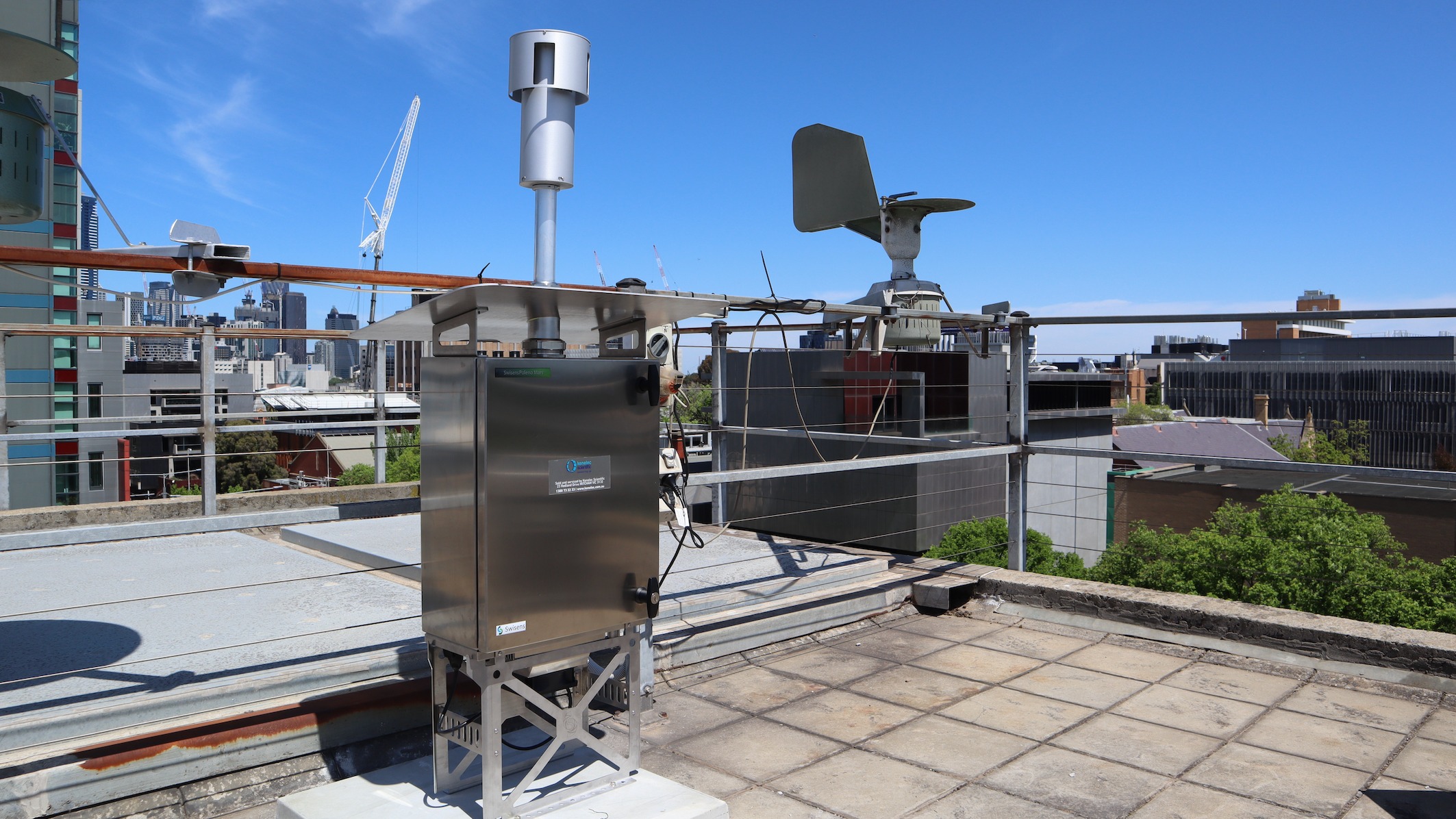Automated pollen counter to revolutionise hay fever management

Australia's first automated pollen counter – which will significantly improve the way airborne pollen is recorded and help hay fever sufferers better manage their allergies – has been installed by researchers at the University of Melbourne.
The automated pollen counter will enable researchers to undertake continual pollen counts, 24 hours a day, 365 days a year, forming a greater picture of pollen and its health implications, including rare but potentially deadly thunderstorm asthma.
Associate Professor Ed Newbigin and Dr Edwin Lampugnani coordinate the Melbourne Pollen Service and said the automated pollen counter is a game changer in how we count, track, and understand pollen.
"Thunderstorm asthma is an acute event of allergy in the community that comes on rapidly. The pollen counter will provide better time resolution of data so we can know what was in the air at the time, helping us to better understand these severe health incidents," Associate Professor Newbigin said.
Located on top of the McCoy building at the University's Parkville campus, the automated counter works by collecting samples of air. As the pollen grains fly through the collected air sample, the machine's sensors send data to learning algorithms that identify the different types of pollen based on their shapes as they are in flight.
"The trap takes away the laboriousness of sitting under a microscope doing the daily count and lets us focus on interpreting the data," Associate Professor Newbigin said.
"We can also measure different types of pollen, not just the common grass pollen."
This extra data could be added to the Melbourne Pollen Count and Forecast App so that more Victorian’s can better understand their triggers and better manage their hay fever and asthma.
Many of the app's features are free to all users, and there are some paid features in the premium version that help to support ongoing research.
"The app also has a survey that lets people tell us how they feel. We can use this information to identify particular days or times when people are feeling really terrible," Dr Lampugnani said.
"Since these new devices provide near real time information about what’s in the air, we can help people better understand what’s triggering their asthma or hay fever symptoms."
The automated pollen counter is the first step in creating an Australia-wide automated pollen network.
"With enough support, we can develop Australia’s first automated bioaerosol monitoring network, capturing not just pollen, but other airborne biological materials, such as mould spores," Dr Lampugnani said.
The University of Melbourne have partnered with Swisens and Kenelec on this project.